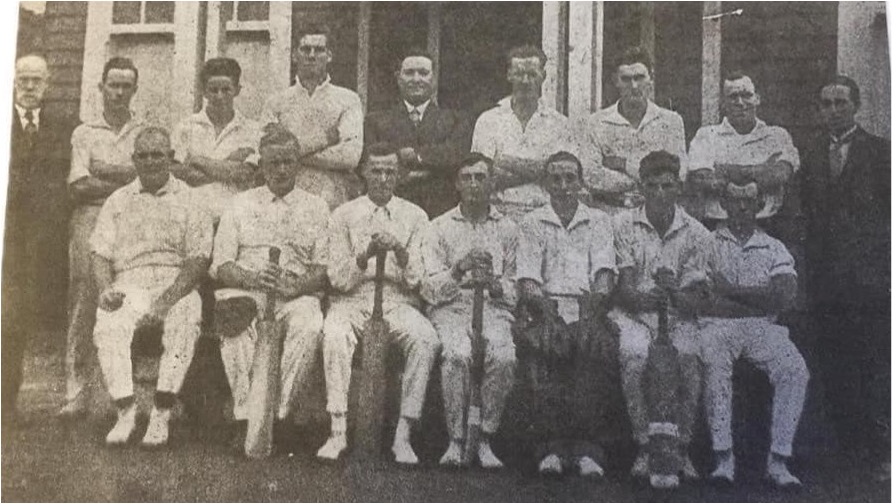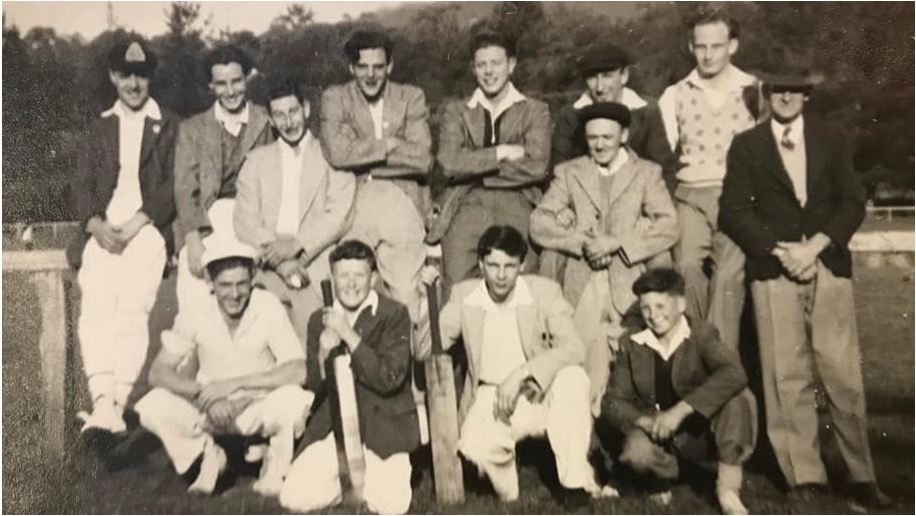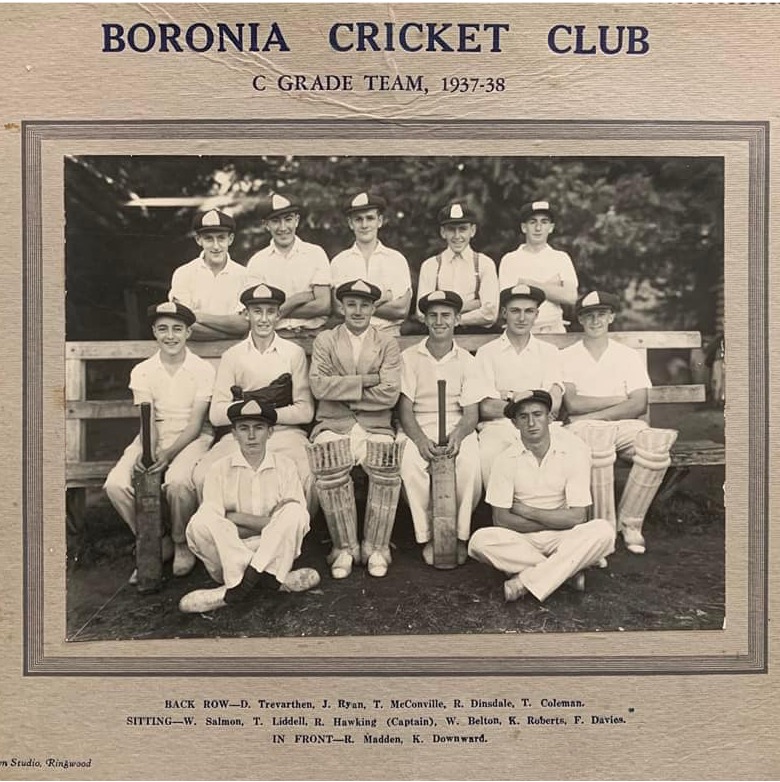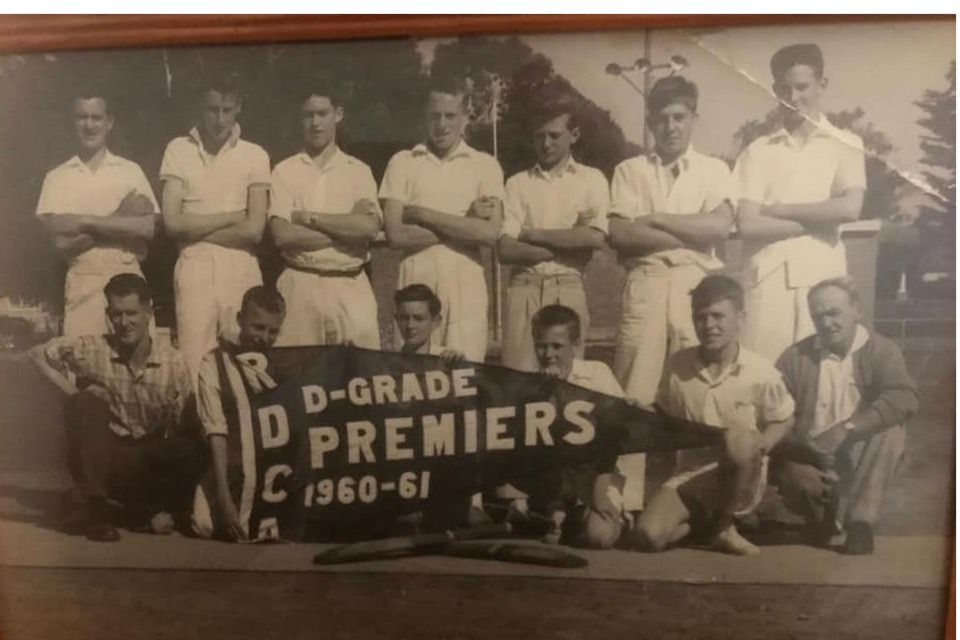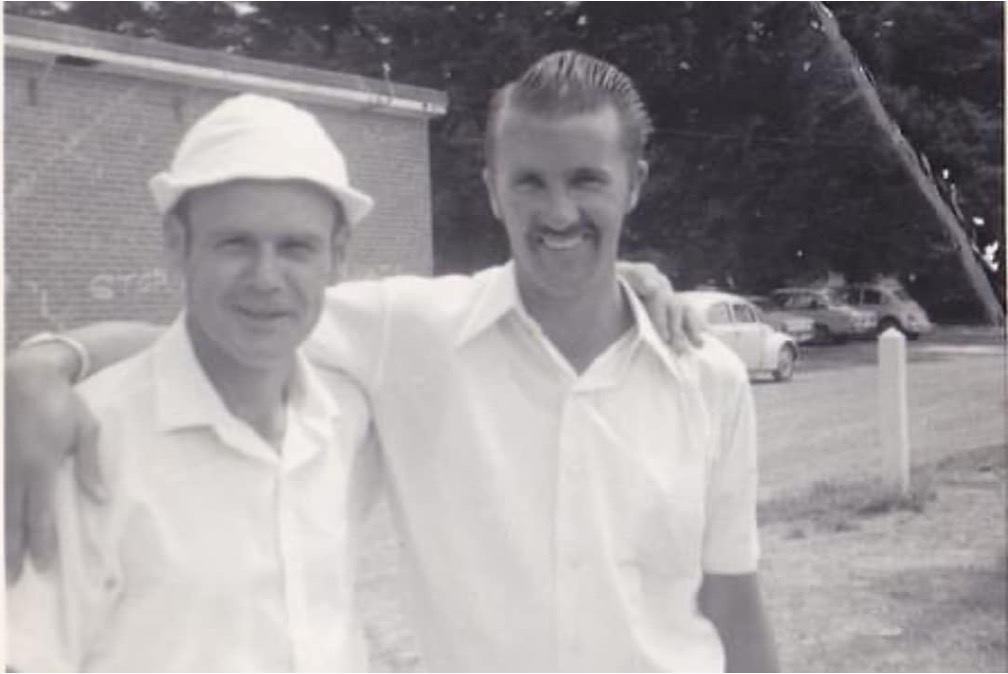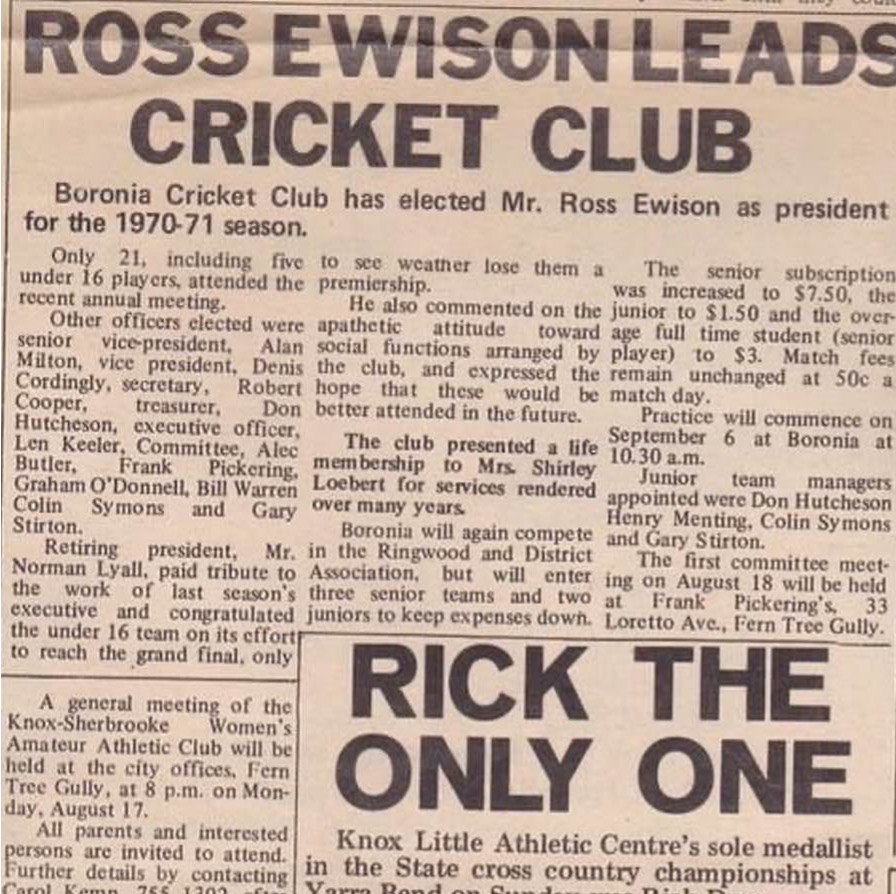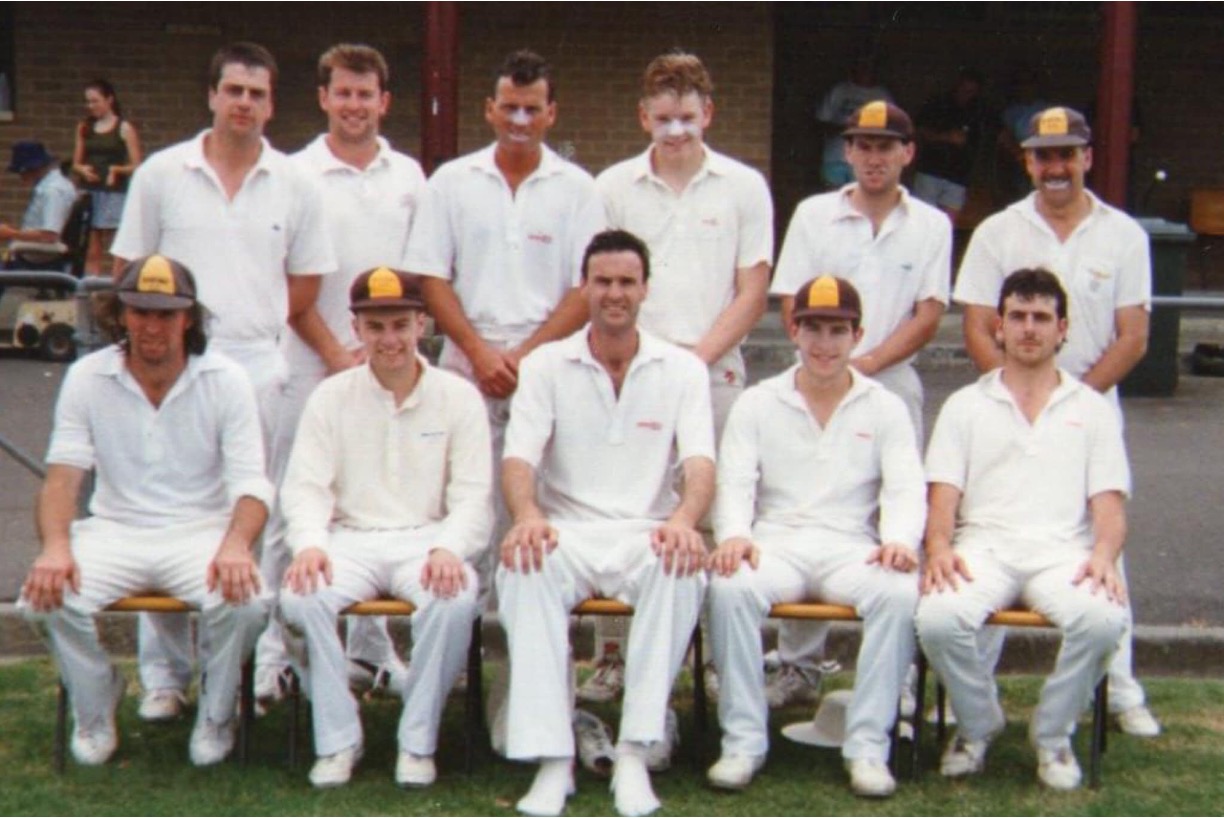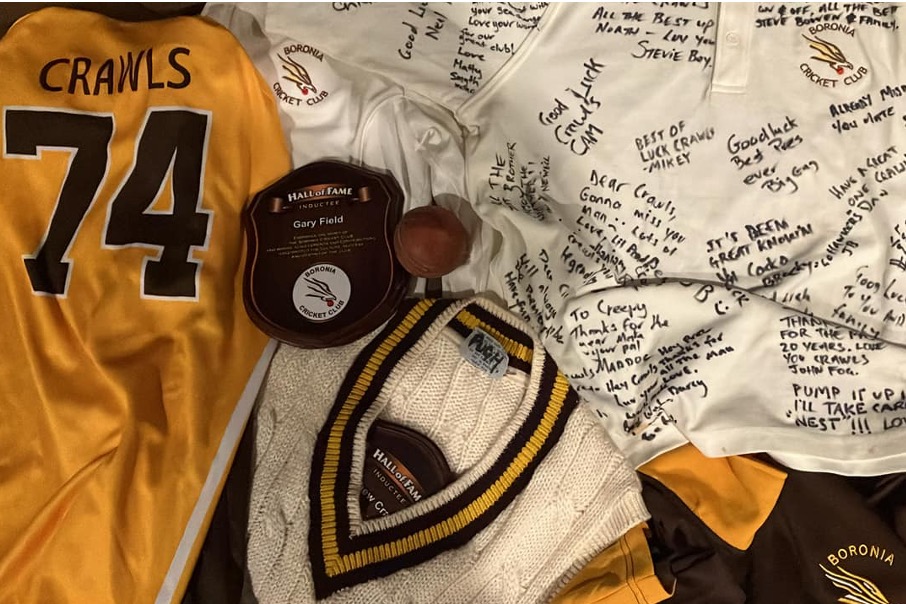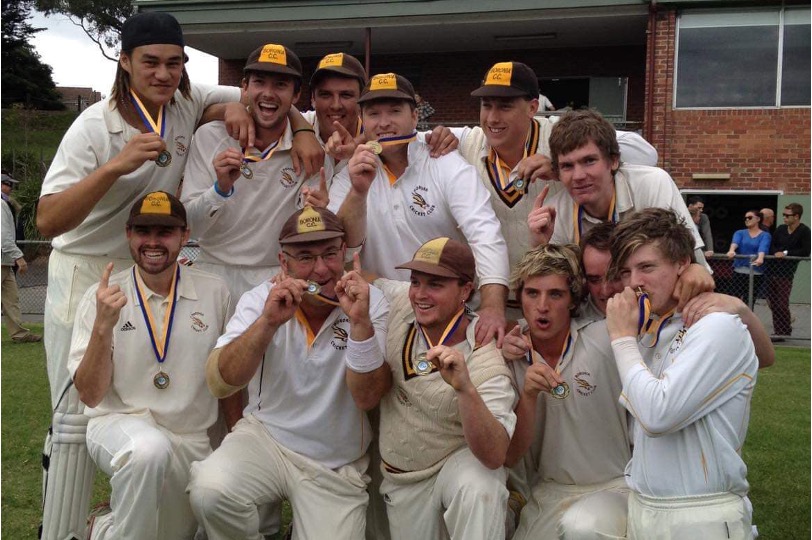More Than a Century of Tradition, Triumph, and Community
From humble beginnings in the Boronia Progress Hall to the bustling Tormore Reserve of today, the Boronia Cricket Club (BCC) has stood as a pillar of sporting life and community spirit in Melbourne’s eastern suburbs. Celebrating over a century of cricketing tradition, the club’s story is one of perseverance, passion, and profound community connection.
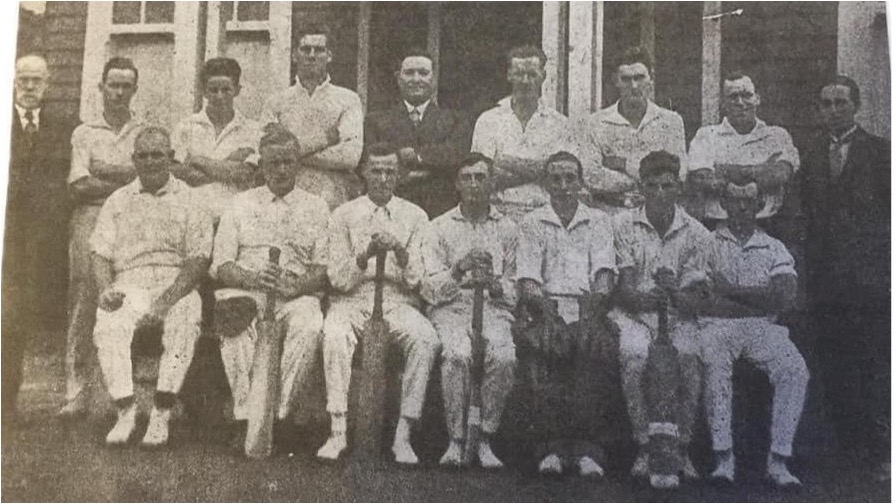 (Players & Officials - 1925/26)
(Players & Officials - 1925/26)
The Boronia Cricket Club was officially established at its first Annual General Meeting on Saturday, 14th July 1923, held at the Boronia Progress Hall. With George Ward Snr. elected as the inaugural president, the club set about laying foundations not just for competition, but for an enduring community institution.
The 1924–25 season reflected the simplicity of the era. Match scores were submitted to newspapers via the local stationmaster or train guard, a far more reliable method than post at the time.
By the 1925–26 season, the club was already making an impact in inter-association matches. Boronia’s G. Chapman captained and starred for the A team of the Ringwood District Cricket Association (RDCA), scoring 36 runs against Box Hill Reporter. G. Chandler, another prominent figure, took 69 wickets at an average of 5.5, securing the RDCA bowling average title—a feat he repeated in 1926–27 with 69 wickets at 6.83.
The Chandler family loomed large in BCC’s early days. Members included:
• A.E. Chandler – father of Sir Gilbert
• G.L. Chandler (Sir Gilbert) – later a Victorian Minister for Agriculture
• A.H. Chandler, A. Chandler, and others, forming a multi-generational backbone to the club.
By 1927–28, the club had a robust roster of 25 registered cricketers, including D. Birdsay, E. Beaumont, H.B. Stewart, and the Avery family.
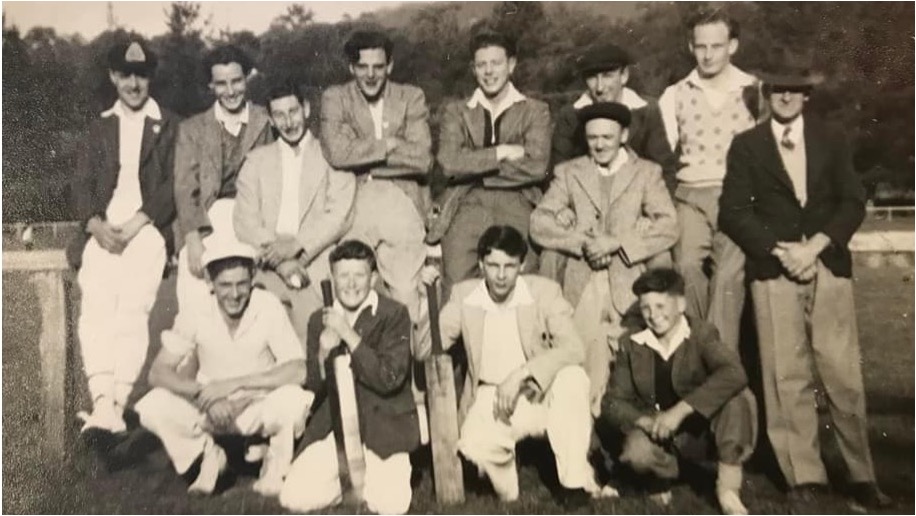 (Details Unknown)
(Details Unknown)
During the early 1930s, administrative discipline was taken seriously in the Ringwood & District Cricket Association. Boronia Cricket Club, along with several other clubs, was fined a shilling on multiple occasions for failing to submit match results. Additionally, Boronia incurred fines of one shilling on two separate occasions and a further two shillings and sixpence for commencing matches late—a significant penalty at the time. To put these fines in perspective, the Association’s own accounts at the same meeting totalled just 14 shillings and threepence across eight payments.
At the RDCA meeting held on 20 September 1932, Boronia Cricket Club applied for an interim permit for Mr. G. Chandler, pending the arrival of his official clearance from Richmond. This was almost certainly Gil Chandler, who would go on to become Minister for Agriculture in the Victorian Government, and later be knighted as Sir Gilbert Chandler.
At a subsequent meeting of the RDCA on 19 January 1933, G. Chapman formally announced his departure from the district and offered his apologies for being unable to attend the meeting—an indication of his respectful farewell from cricket administration in the region.
Interestingly, the RDCA meeting on 9 March 1933 was chaired by G. Chapman—suggesting that, contrary to some belief, he had not left the district at that time.
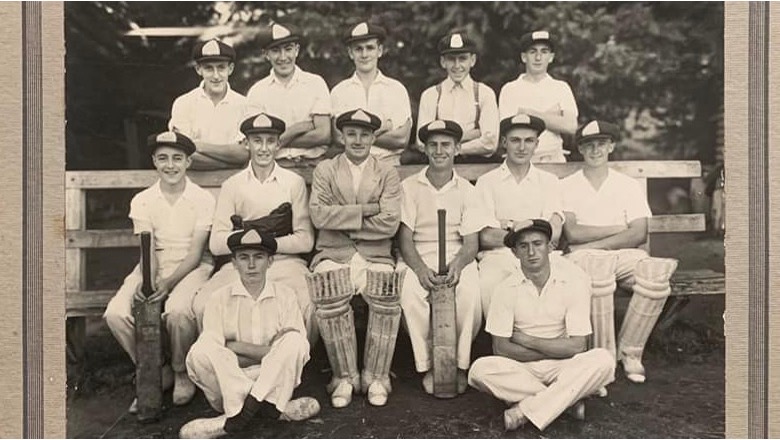 (C Grade Team - 1937/38)
(C Grade Team - 1937/38)
By October 1953, Boronia had grown enough to fielded three senior grades in the RDCA:
A Grade, B Grade and C Grade. The Under 15 team also made waves in the Ferntree Gully Association with an outright win over Sassafras. G. Young scored 95* and took 3/2, while P. Downward claimed a hat-trick.
Towering Cypress trees ringed the ground, casting late-afternoon shadows that made batting difficult—especially without sight screens.
The pavilion was basic: four brick walls, stifling in summer and freezing in winter. Cricket and football teams shared the space, divided only by a curtain. The smell—a heady mix of beer, sweat, liniment and urine—was unforgettable. The showers were almost unusable. A kiosk was added in the late 1960s, giving wives and girlfriends a better space to prepare afternoon teas. Beryl Symons became famous for her sponges and pavlovas—always bringing one extra for Bluey Paxton.
Practice nets sat under the Cypress trees in the lowest, wettest corner of the ground, often underwater. Sometimes, training was held on the centre wicket with a net strung behind the stumps. Batters padded up at square leg, dodging balls hit their way. The gear was a mismatched collection of hand-me-downs, and bowlers were always scarce. In fading light, fielders were few—except for Rusty, Ross Ewison’s dog, who chased and returned the ball with soggy enthusiasm.
Facing Bob McGrotty’s short balls at full pace in near darkness was a test of courage.
The RDCA used coir mats over concrete pitches, sourced from Pentridge Prison. Thick and springy, they gave sharp bounce and sideways movement. Teams stretched the mats tight when bowling for extra pace, or left them slack to slow things down when batting.
Each mat overlapped at the centre, leaving dirt at either end. Worn patches from repeated bat tapping were repaired every couple of seasons. Eventually, the middle gap widened enough that no balls were bowled off the concrete. Sometimes, balls would strike the leather seam and leap unpredictably.
After each game, the home team rolled up the mats—though a few players routinely vanished at this time. When wet, it took six men to drag a mat to the pavilion, where it was laid out to dry, adding yet another layer to the shed’s already legendary aroma.
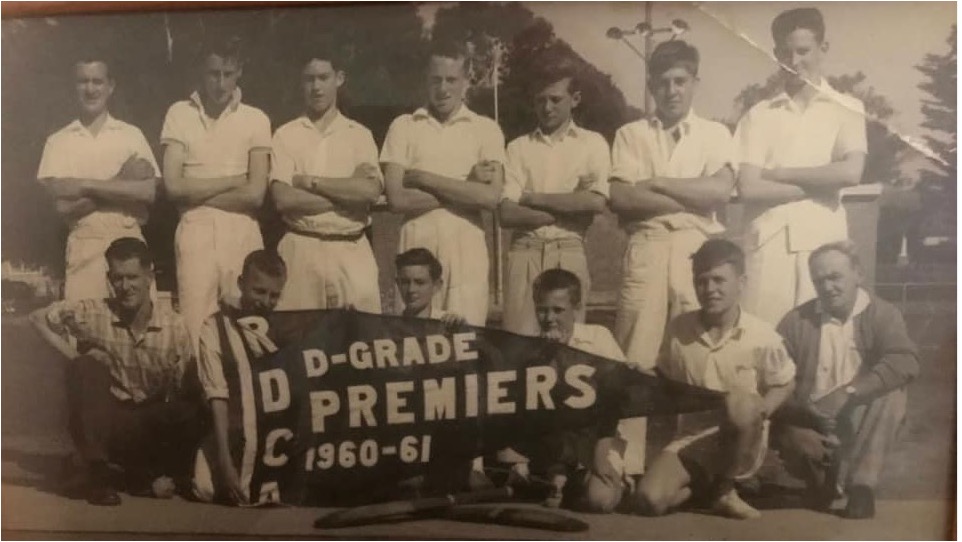 (D Grade Premiers - 1960/61)
(D Grade Premiers - 1960/61)
In 1977, the club relocated from Park Crescent—now the site of Knox Basketball Stadium—to a new home at Tormore Reserve. This move, prompted by Knox Council’s plans to redevelop Park Crescent, marked a new era. The Tormore site had previously been a market garden adjoining Boronia High School. Bill Warren led the club committee through the transition and successfully negotiated the installation of turf wickets, replacing the coir matting used previously. This leap forward lifted the standard of cricket and underlined the club’s ambitions.
A new pavilion was constructed with the intent to serve both the cricket and badminton clubs. However, it was soon discovered that the building was too narrow for a regulation badminton court, so the Boronia Badminton Club did not relocate. Instead, the pavilion became a shared home for Boronia Football Club, which moved to Tormore shortly after. This established Tormore Reserve as a true community sporting hub, eventually supporting cricket, football, and netball.
In the club’s first season at Tormore, John Hall served as captain-coach, making an immediate impact with 379 runs at an average over 47—setting the tone for the club’s turf-wicket era.
Early turf wicket preparation was a shared effort, with players rostered to roll and mark pitches on training nights and Saturday mornings. Stu Eastwood, father of player Darren Eastwood, was instrumental in early wicket curation. Training sessions often began with two warm-up laps followed by 10–15 minutes of weeding.
The new turf wickets posed a challenge for batters in the early years, with par scores hovering around 180.
The club's development culminated in the 1979–80 season, when Boronia’s First XI won its first turf-era premiership—a landmark achievement that confirmed the club's successful transition and growing strength.
Other notable features of the era included bench seating salvaged from VFL Park, placed outside the pavilion, and VFL/AFL practice matches hosted at Tormore—further cementing its status as a premier suburban venue.

Uniquely, the award was voted on by opposition captains, ensuring an unbiased reflection of both impact and sportsmanship. In March 1996, Simon Barton was announced as the inaugural recipient—etched forever as the first winner of an honour that would come to symbolise excellence in the club’s highest grade. By March 2000, Barton had claimed his fourth Allen Pugh Medal—a record that would stand unchallenged for the next 23 years.
On Saturday, 30 November 2002, Paul Noone made his First XI debut against La Trobe University. In a modest but promising performance, he claimed 2/12 with the ball and finished unbeaten on 1 not out. It would be another 13 months before Noone received a second opportunity in the First XI, but from that moment on, he became a fixture at the top level for Boronia. Over the following two decades, Noone built a reputation as one of the club’s most consistent and reliable performers—embodying longevity, commitment, and excellence in the brown and gold.
The 2004–05 season began under a cloud, with the club parting ways with its newly appointed captain-coach just four rounds into the season due to disciplinary issues. It was a difficult but necessary decision—later described by then-President Darryl Watson as the toughest call of his tenure.
In the wake of this upheaval, John Blennerhassett stepped in to steady the ship. A familiar figure at Tormore, Blennerhassett had first joined Boronia as captain-coach in the 1997–98 season and brought both experience and composure to the role. Under his leadership, the First XI rallied and went on a remarkable run, culminating in the A-Turf premiership with a Grand Final victory over Richmond City.
That same season also saw the Boronia Cricket Club Women’s XI claim C South East premiership honours in the Victorian Women’s Cricket Association, defeating Kingston Heath in a memorable Grand Final.
The dual triumphs were a testament to the club’s resilience, unity, and growing depth, turning a turbulent beginning into one of the most celebrated seasons of the decade.

The 2010 season marked a turning point for Boronia Cricket Club with the appointment of Ben Stallworthy as captain-coach. His arrival brought renewed direction and purpose, and was complemented by the recruitment of two future club greats—Stephen Bowen and David Carmen. Both players would go on to leave an indelible mark on the club’s history, amassing countless accolades over the following decade.
Stallworthy’s impact was immediate. In his first year at the helm, he led the First XI through an undefeated campaign that culminated in a dominant A-Turf Grand Final victory over Marcellin. Not to be outdone, the 3rd XI also delivered silverware, securing the F-Grade premiership in a season that showcased the club’s depth and growing strength across all levels.
It was a dream start to a new era—one that set the tone for a sustained period of success at Tormore Reserve.
Towards the end of the 2021–22 season, the club established a Centenary Working Committee to begin preparations for its milestone 100th season. The committee—comprising John Blennerhassett, Rod Kimmitt, Matt Crawley, Tracey Pugh, Andrew Skillen, Steve Oluc, and John Eccles—was tasked with planning a celebration worthy of the club’s enduring legacy.
The centenary festivities officially commenced on Saturday, 4 November 2023, with the launch of a four-day celebration. Day one featured a 100th Celebration Luncheon at Tormore Reserve, where guests gathered to watch the First XI in action—though a scheduling quirk nearly saw the club without a match to open proceedings. With the First, Second, and Third XI sides all fixtured away or with byes, the 4th XI fixture against Mt Everlyn was relocated to Tormore Reserve to ensure cricket was played at Boronia to begin the weekend.
This marked the first and only time in club history that Boronia’s 4th XI played an RDCA match for premiership points on turf at Tormore Reserve. The club thanked Mt Everlyn for their generosity and flexibility in allowing the fixture to be moved. Boronia won the match—kicking off the centenary celebrations in style.
Day two of the celebration saw members converge on Eastwood Golf Club for a club golf day, followed by day three’s “Night of Nights” at the Knox Club—a gala event attended by over 120 past and present players, supporters, and friends of the club. The night saw guest speakers across all the generations of the club share their stories and reflections.
It also saw the establishment of the Boronia Cricket Club "Hall of Fame" – recognising members whose “achievements and contributions have shaped the culture, success and destiny of the club.”
The newly established Hall of Fame committee inducted 17 members:
Sir Gilbert Chandler, Rolf Loebert, Keith “Bluey” Paxton, Ross Ewison, William “Bill” Warren, Colin Symons, David Wood, Greg May, Allen Pugh, Daryl Watson, Dennis Carroll, Gavin DeJager, Tom Good, John Eccles, Gary Fields, Matthew Crawley and Doug Chapman.
The final day concluded with more informal catch-ups and reflections, drawing the curtain on a landmark celebration in the club’s proud history.
On Saturday, 4 March 2023, David Carmen capped off an outstanding season by claiming his fifth Allen Pugh Medal—a record that stands alone in club history.
Just months later, on Saturday, 14 October 2023, Paul Noone played his 176th game representing Boronia’s First XI, breaking the long-standing record of 175 games set by the legendary Allen Pugh.
Acknowledgement
Special thanks for the contributions of Matt Crawley, Mark Harris, Rod Kimmitt, Andrew Skillen, Col Symons, and all members of the 100th Working Committee for their invaluable assistance in gathering and verifying the historical information that forms the foundation of this timeline. Their commitment to preserving the legacy of the Boronia Cricket Club has been instrumental in capturing the stories, milestones, and memories that define our proud history.

